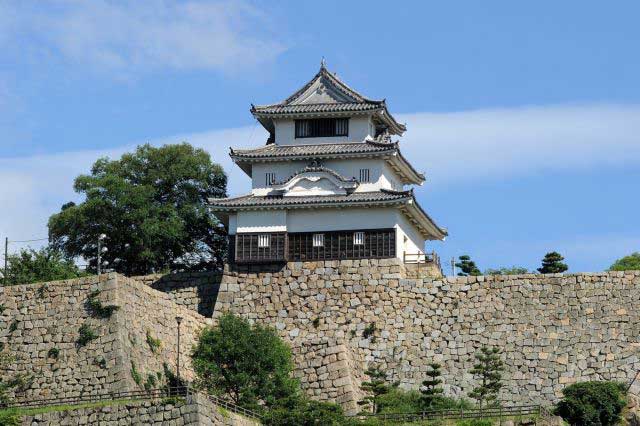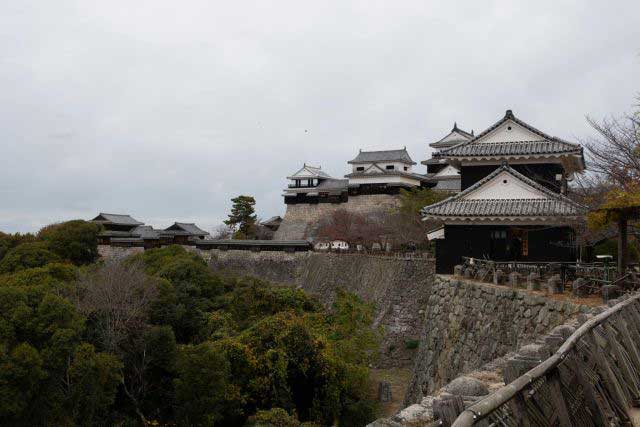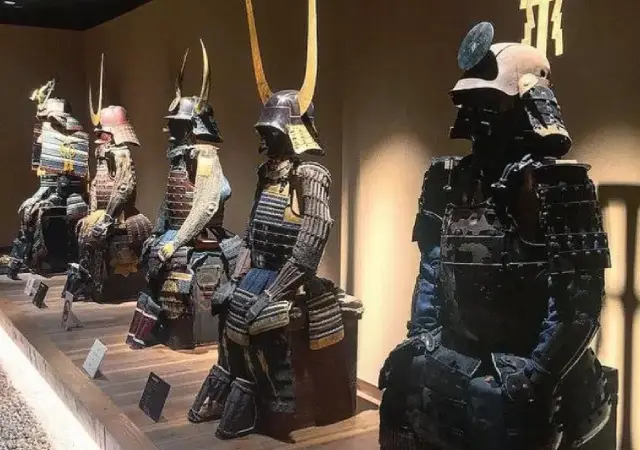
Fukui Castle, erected in 1606 by Yuki Hideyasu, Tokugawa Ieyasu's clandestine son, stands as a testament to a complex family history. Born to Oman, a servant of Ieyasu's wife Tsukiyama Dono, Yuki Hideyasu was concealed by his father out of fear of marital discord. Raised in the shadows until his emergence as a samurai, Yuki proved his mettle in numerous battles, earning accolades from Ieyasu himself.
At the pivotal Battle of Sekigahara, Yuki Hideyasu sided with his father's Eastern forces, showcasing his prowess once more and garnering Ieyasu's admiration. In recognition of his valor, Ieyasu granted him the lands of Shibata Katsuie in Echizen Province (now Fukui Prefecture) and aided in the construction of Fukui Castle. Designed by Ieyasu and fortified with stones from Kitanosho Castle, the castle complex, including the Honmaru and Ni-no-maru precincts, took six years to complete.

In 1624, Fukui Castle was formally christened by its third lord, Matsudaira Tadamasa, marking the beginning of Fukui Domain's rule under the Matsudaira clan for 270 years. Although the castle's iconic five-story tower keep succumbed to flames in 1669 and was never rebuilt, the resilient stone walls and expansive moats endure as silent witnesses to centuries of history.

Today, the former castle grounds host governmental and law enforcement offices, yet echoes of Fukui Castle's legacy persist. A monumental stone statue of Yuki Hideyasu graces the landscape, while ongoing efforts seek to enhance the site's historical authenticity, including the restoration of strategic gates like the Rokabashi bridge and the Yamazato-guchi Gomon Gate. The castle's original stone base remains accessible to the public, offering a glimpse into Fukui's storied past amidst the modernity of Fukui Prefecture.
Siehe auch
-
Marugame Castle

Marugame is part of the so-called “Authentic Dozen,” a group of twelve castles whose donjons have survived to the present day without major reconstructions since the Edo period.
-
Iyo Matsuyama Castle

Historically, the center of Iyo Province—corresponding to today’s Ehime Prefecture on the island of Shikoku—was the city of Imabari, while the Matsuyama area was regarded as an agricultural hinterland with broad plains and low hills. During the Muromachi period, the central part of the province was governed by the Kano clan from Yuzuki Castle. With the onset of the Sengoku period, however, this clan lost its former influence and was forced to survive in the shadow of the more powerful Mori and Chōsokabe clans. After Toyotomi Hideyoshi’s forces conquered Shikoku in 1587, the northern part of Iyo Province was granted to Fukushima Masanori, one of the so-called “Seven Spears of Shizugatake.” In 1595, Masanori was transferred to Kiyosu Castle, and the lands around Matsuyama were given to another of the Seven Spears, Katō Yoshiaki, who received Masaki Castle and an income of 60,000 koku of rice.
-
Kanazawa Castle

Construction of Kanazawa Castle began in 1580 on the orders of Sakuma Morimasa, a vassal of Oda Nobunaga. The castle was built on the site of the Ikko-ikki sect's Oyama Gobo temple, which is why it is sometimes called Oyama Castle. Morimasa managed to build several moats and begin construction of a castle town. However, after his defeat at the Battle of Shizugatake in 1583, he was executed, and ownership of the castle passed to Maeda Toshiie (1538–1599).
-
Nakatsu Castle

Kuroda Yoshitaka (1546–1604) was one of the closest advisors to the legendary military commander Toyotomi Hideyoshi. He took part in key military campaigns of the late 16th century, including the campaign against Shikoku in 1585 and the campaign against Kyushu in 1587. Later, during the second campaign in Korea, Yoshitaka served as chief advisor to the commander of the invasion forces, Kobayakawa Hideaki. After Hideyoshi's death, he swore allegiance to Tokugawa Ieyasu, thereby securing his influence and patronage under Japan's new leader.
-
Edo Castle

The history of Edo Castle dates back to the Heian period, when the Edo clan built a small fort on this site. In 1457, the vassal of the Uesugi clan, Ota Dokan (1432–1486), constructed a full-scale castle here. Internal conflicts weakened the Uesugi clan, and in 1524, Ota Dokan’s grandson, Ota Yasutaka, surrendered the castle without resistance to the forces of Hojo Soun, the ambitious leader of the Hojo clan. While Odawara Castle remained the clan's main stronghold, Edo was considered a key strategic fortress.
-
Samurai Museum Shinjuku

Situated in the vibrant district of Shinjuku, the museum showcases an extensive collection of samurai armor, weapons, and cultural artifacts spanning from the Kamakura to the Edo period. The exhibits aim to convey the samurai's unwavering commitment to honor and discipline, reflecting how their spirit continues to influence modern Japanese culture.
-
Anjo Castle

Anjo Castle was built on a slight elevation at the edge of the Hekikai Plateau, about 2 kilometers southeast of present-day central Anjo City in Aichi Prefecture. Today, the surrounding area thrives on large-scale agriculture and automotive manufacturing, utilizing the expansive flatlands and its proximity to the Nagoya region.
-
Numata Castle

Numata Castle, located in Numata, northern Gunma Prefecture, Japan, has a rich and complex history. During the late Edo period, it served as the residence of the Toki clan, who ruled the Numata Domain. Over the centuries, the castle changed hands multiple times and was the site of significant battles during the Sengoku period.

